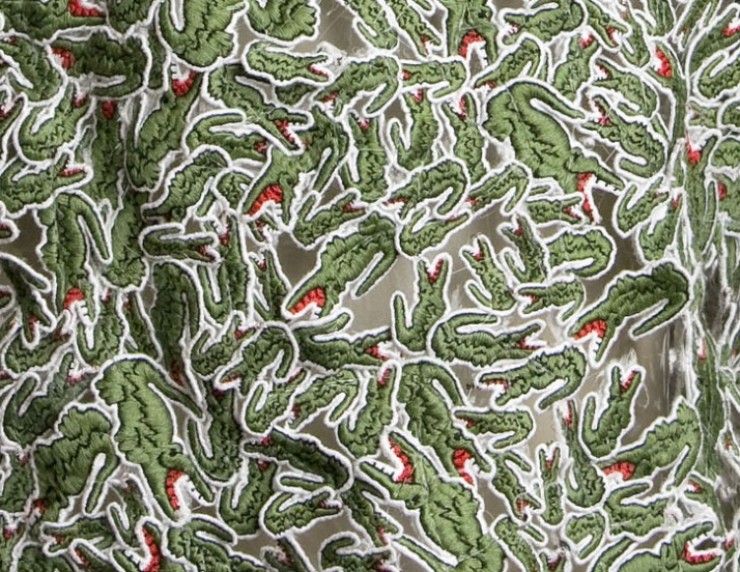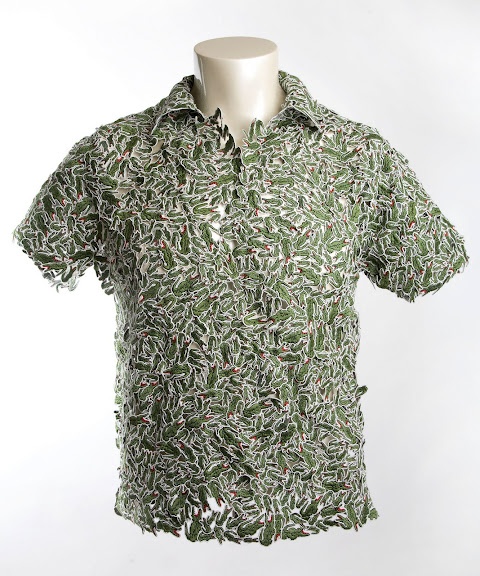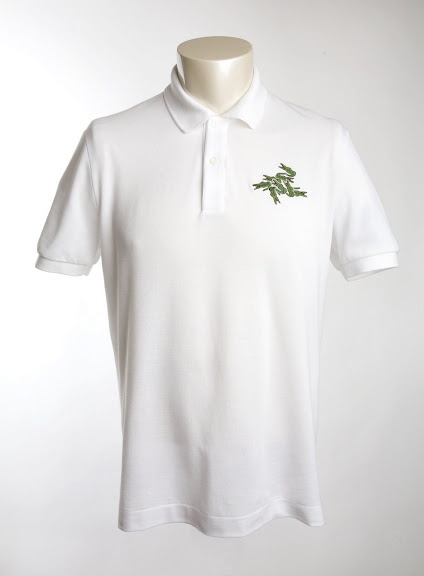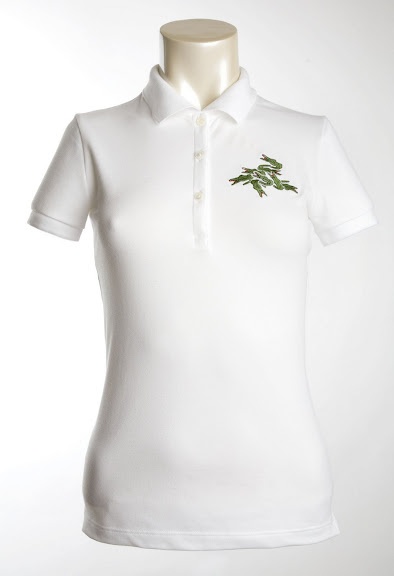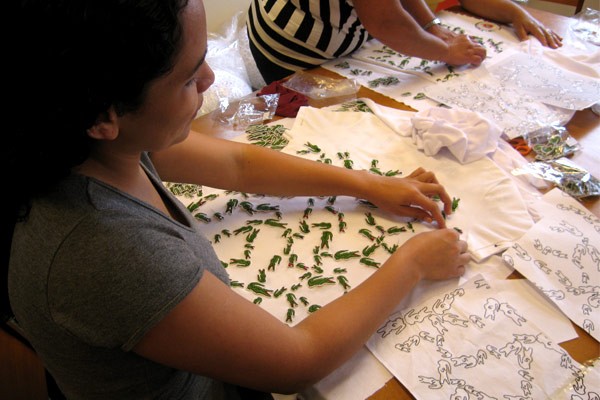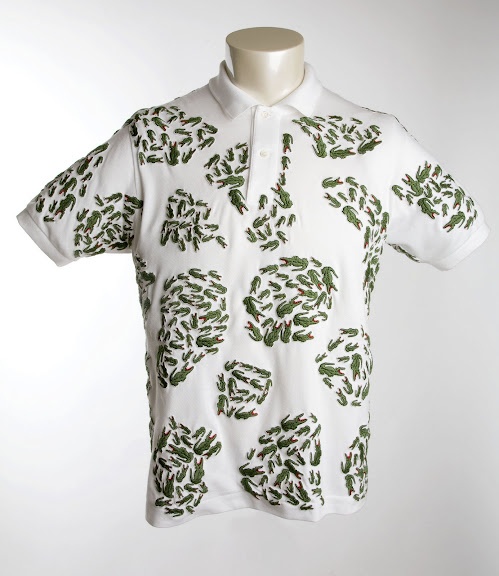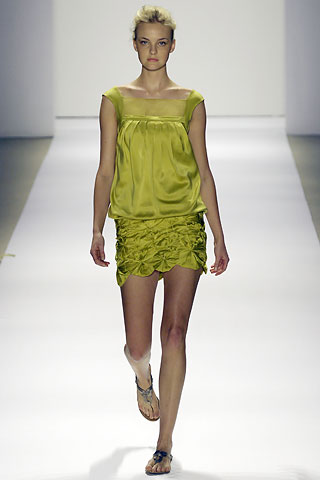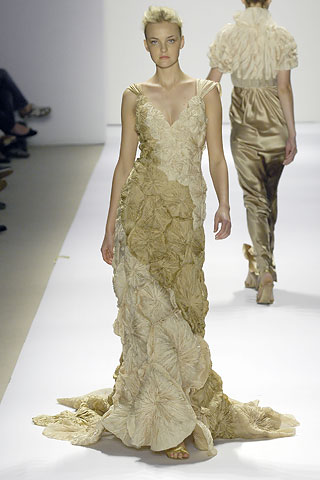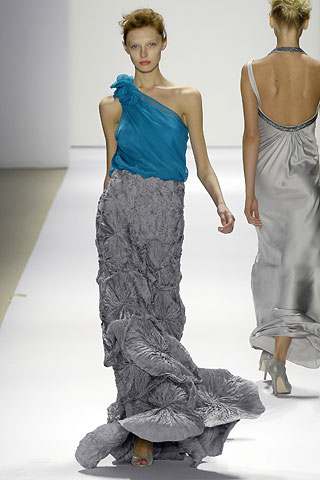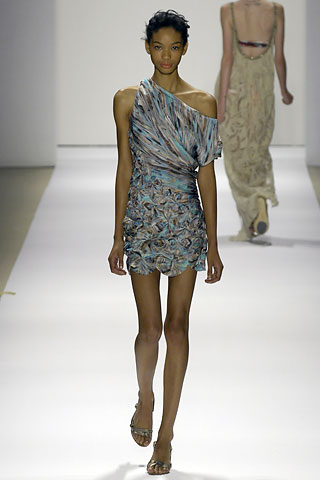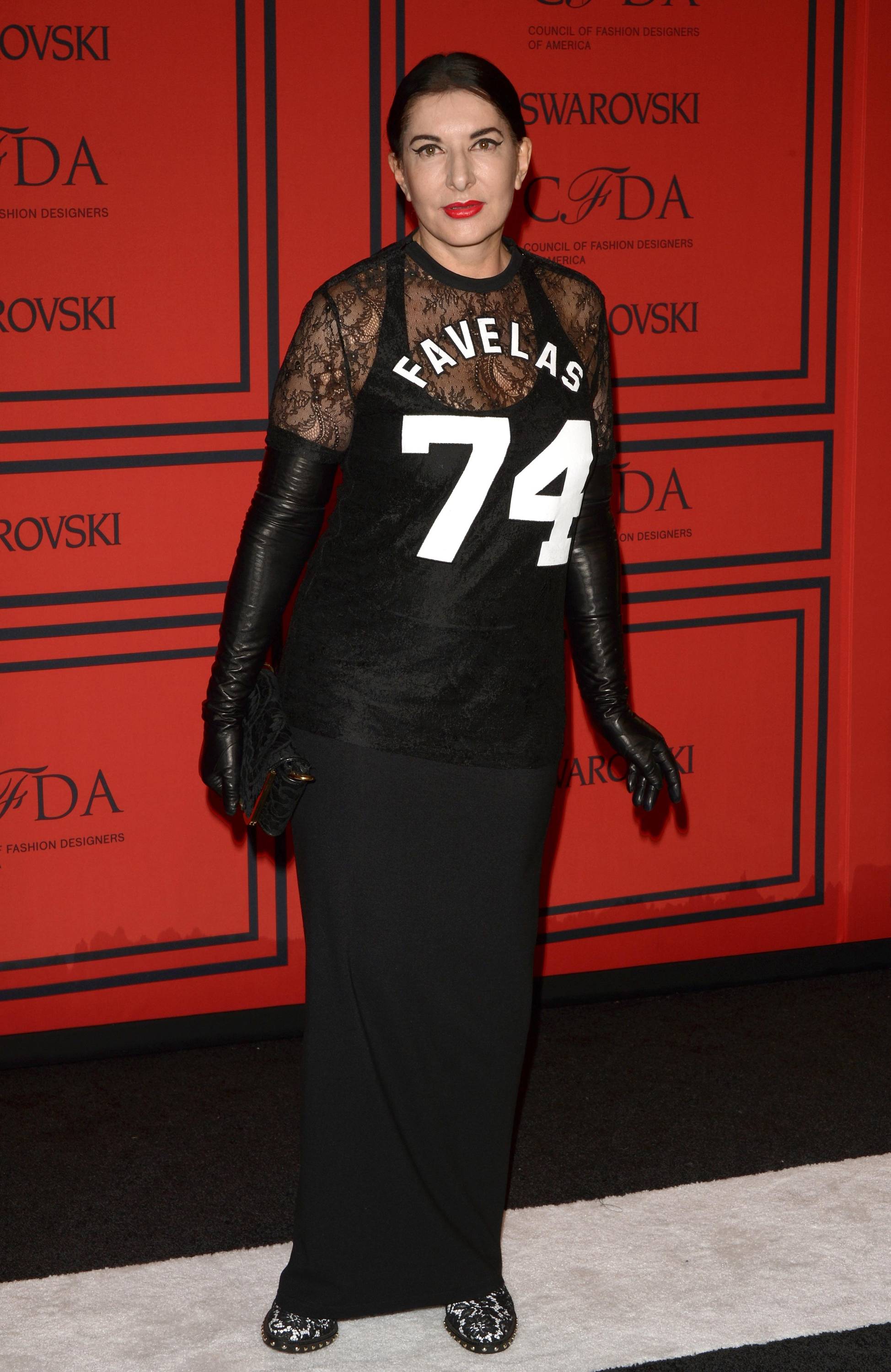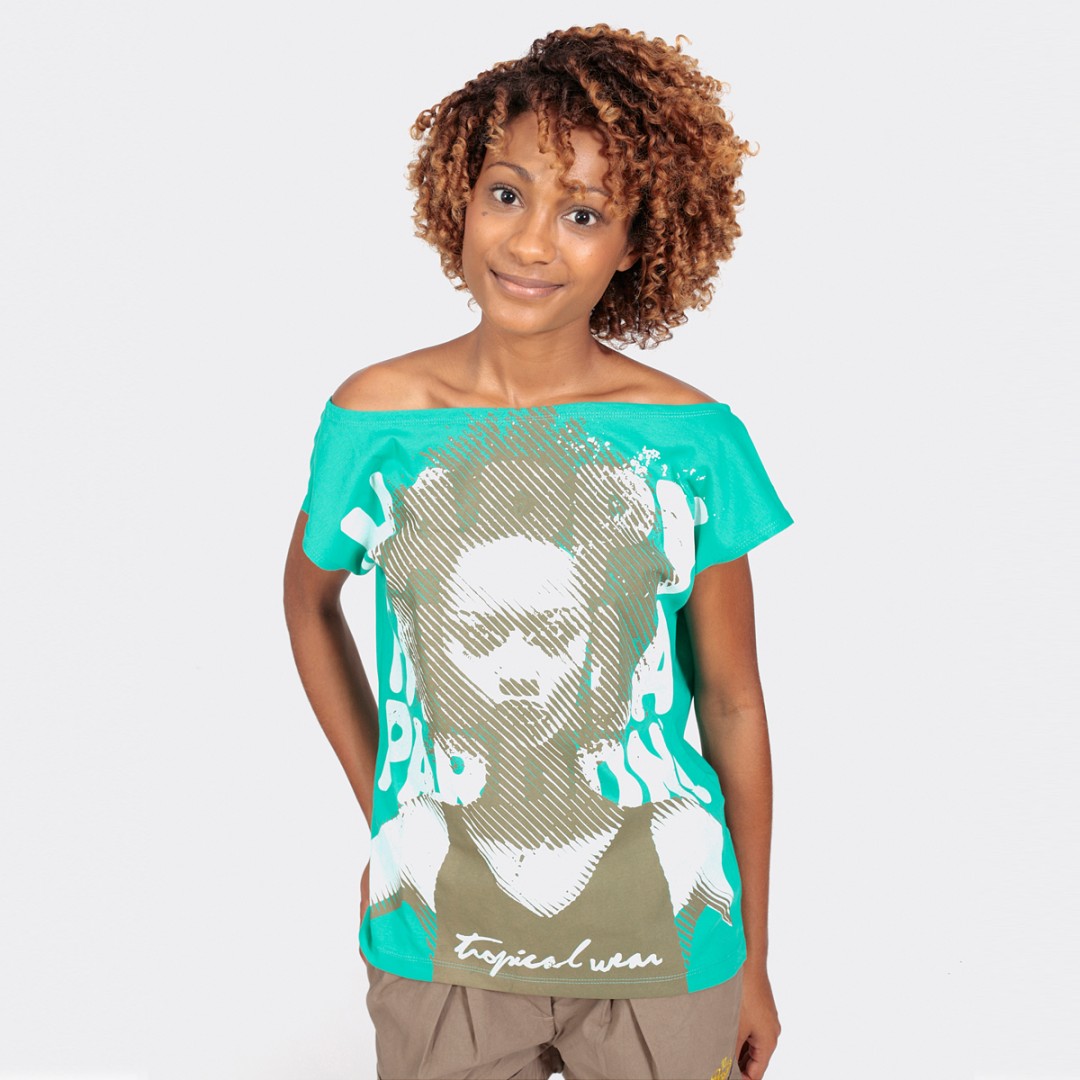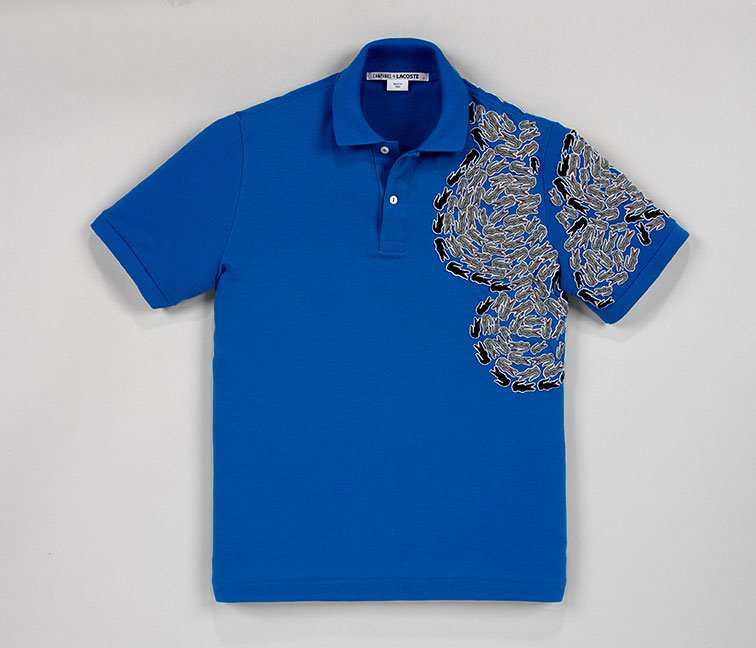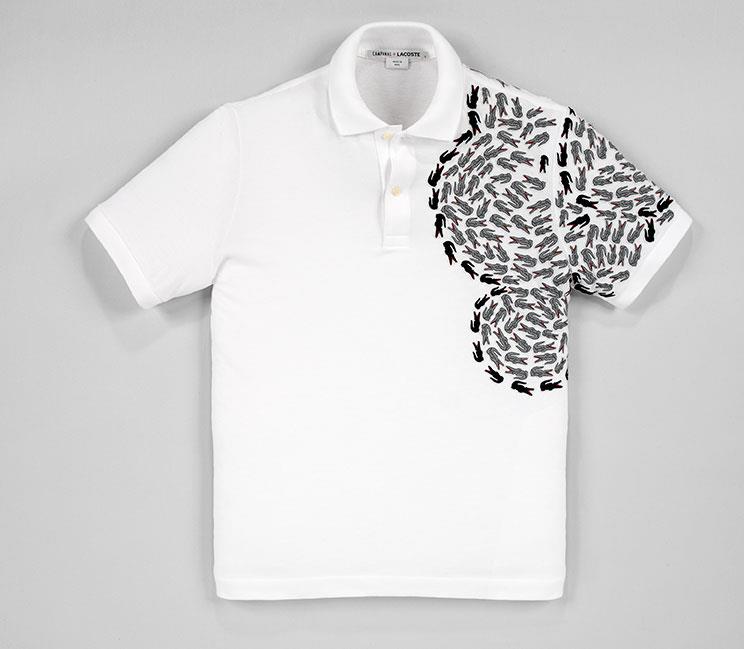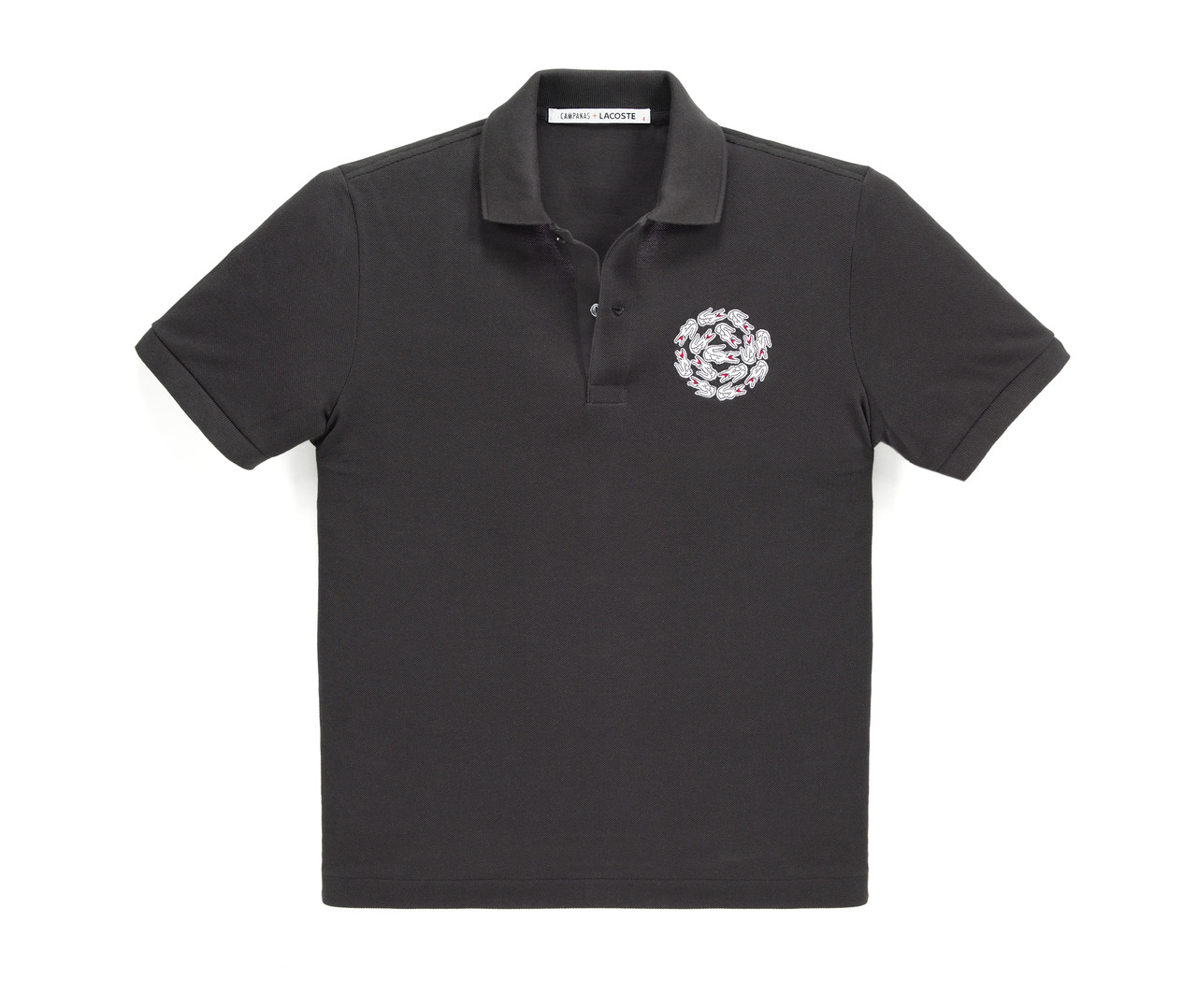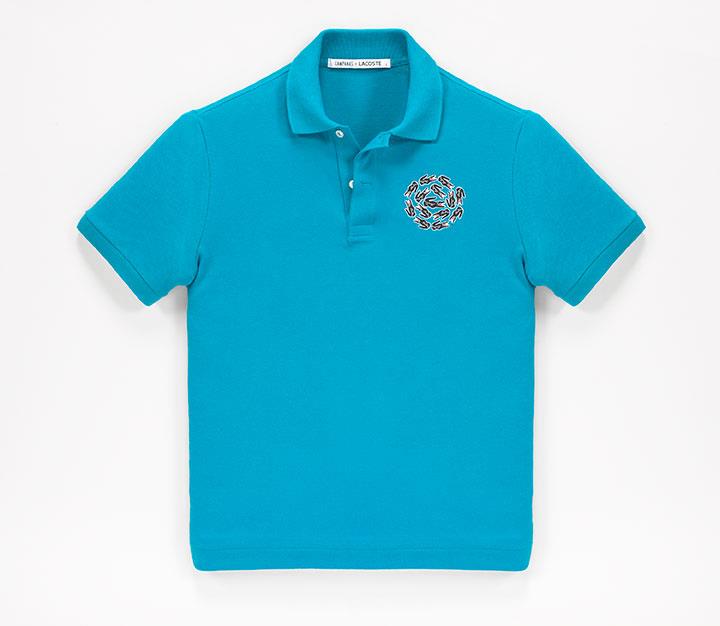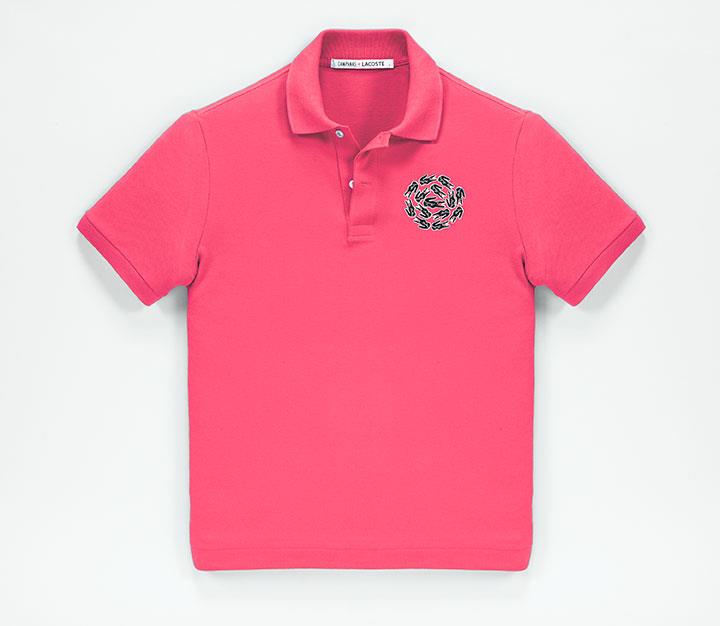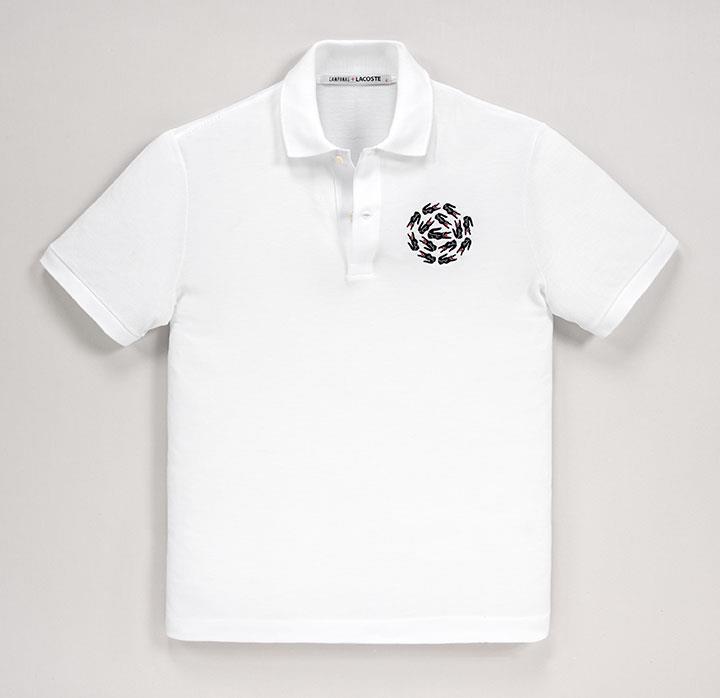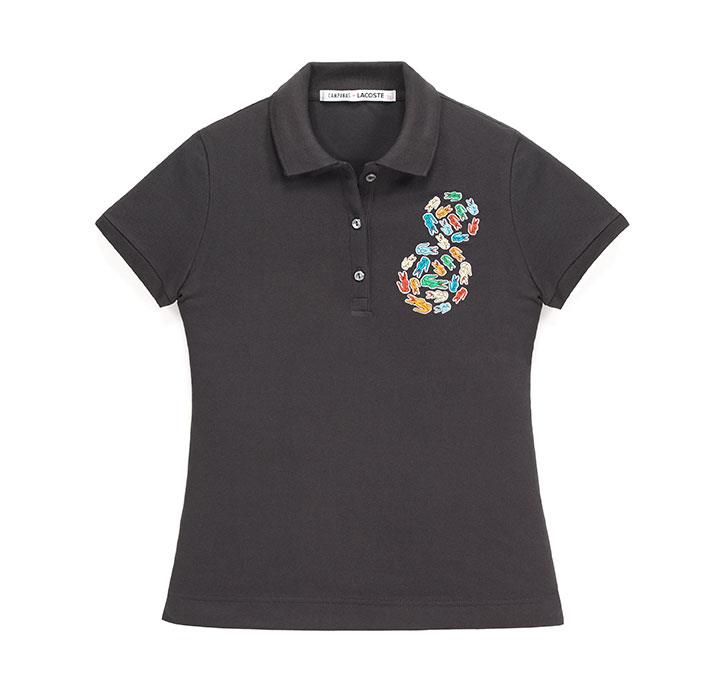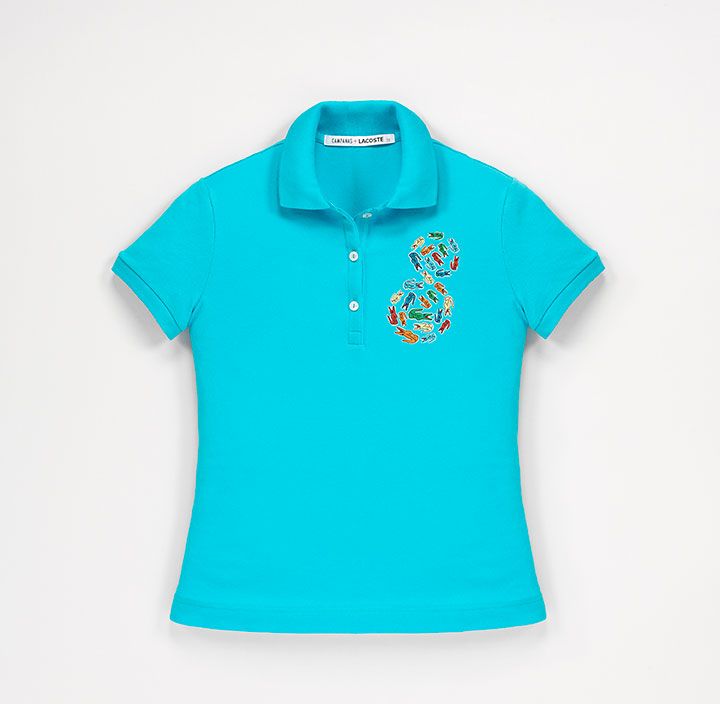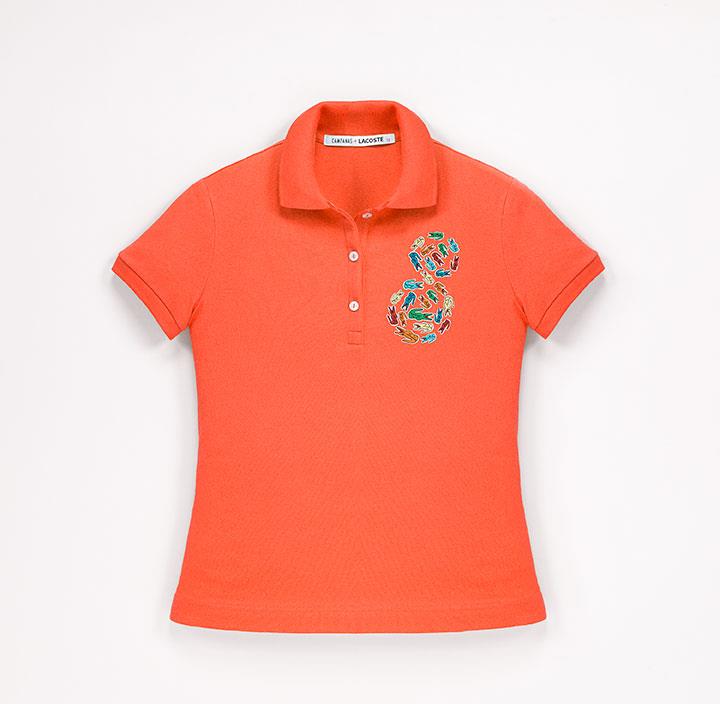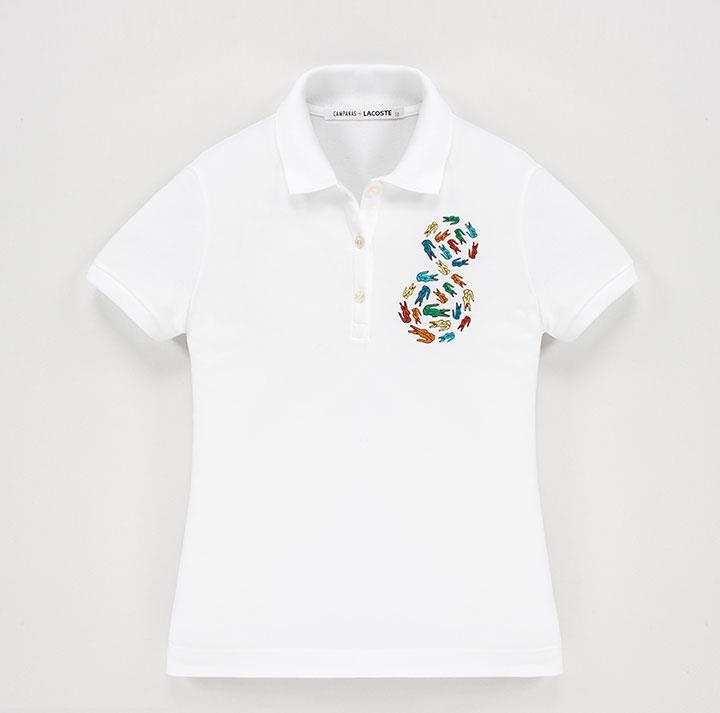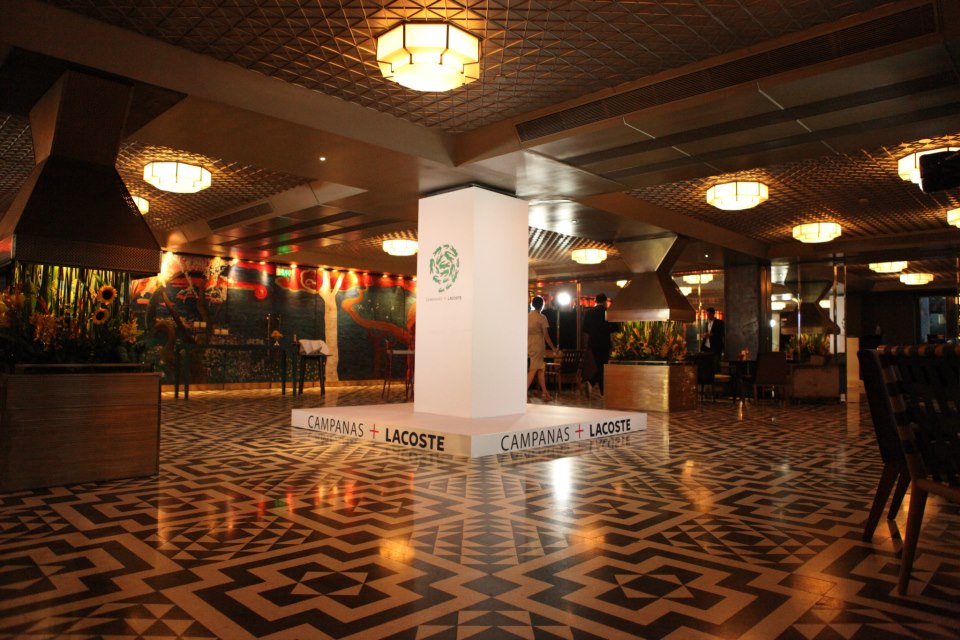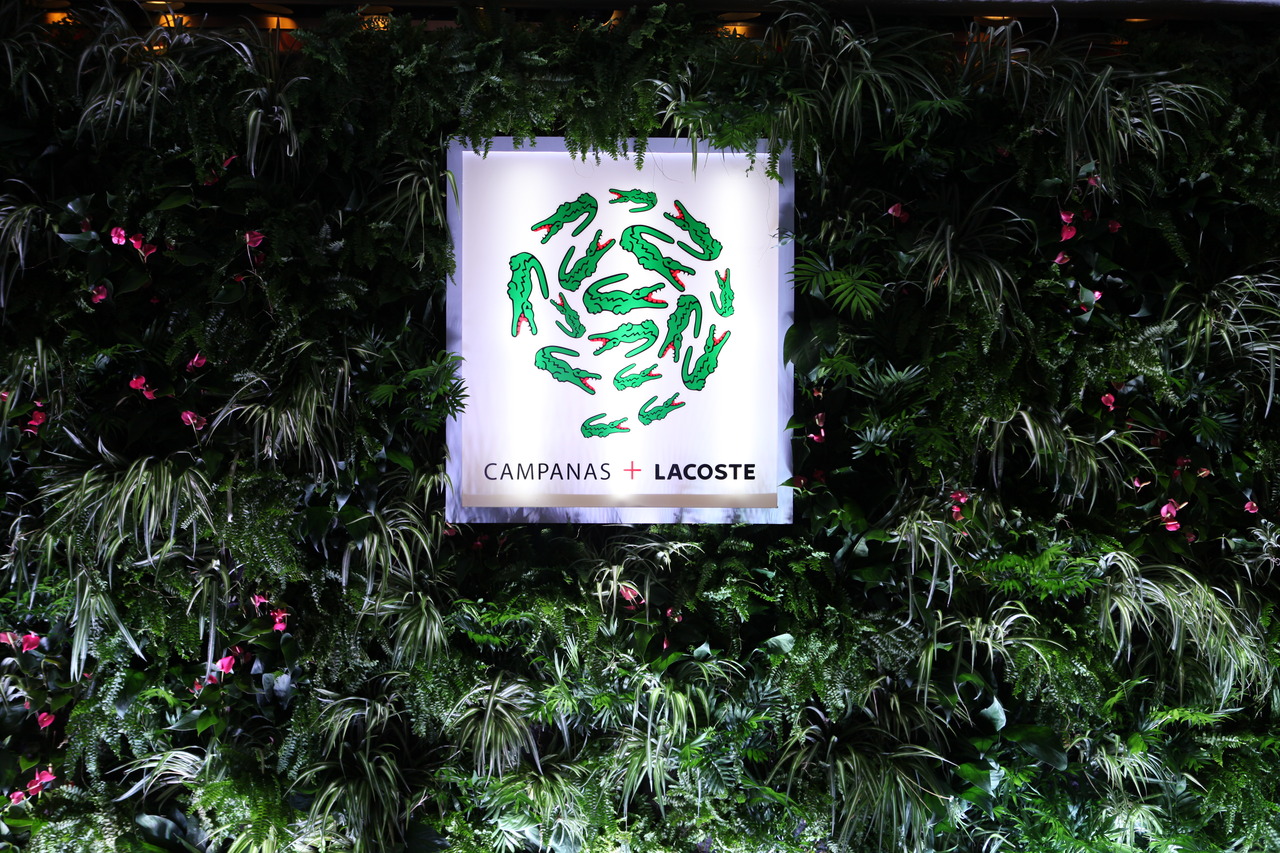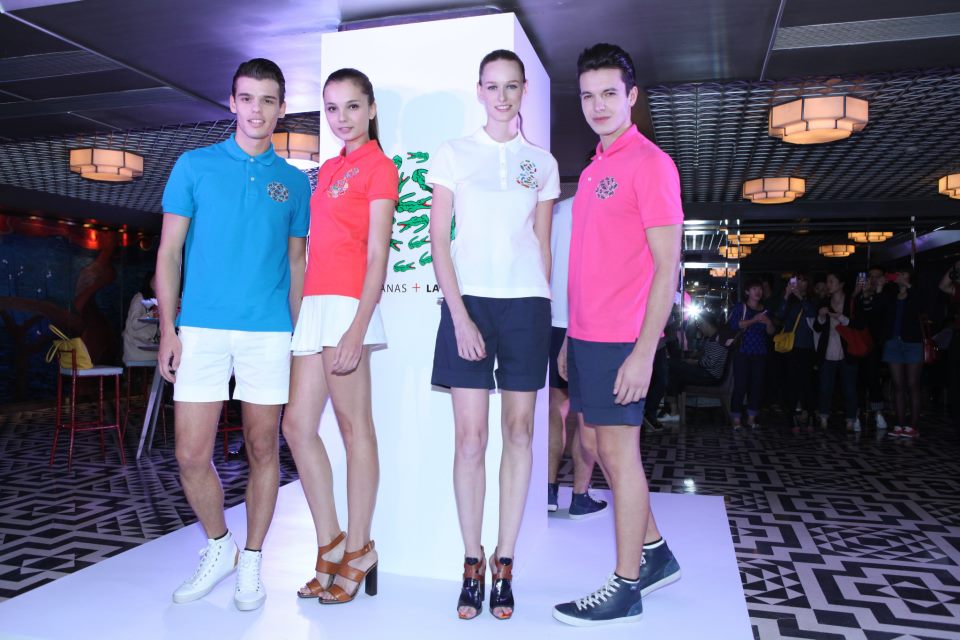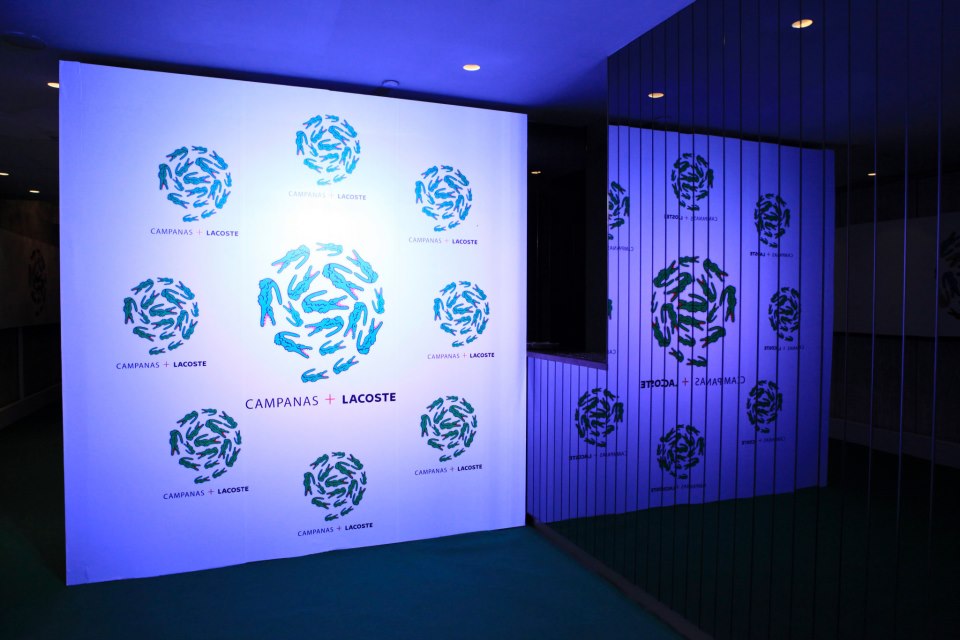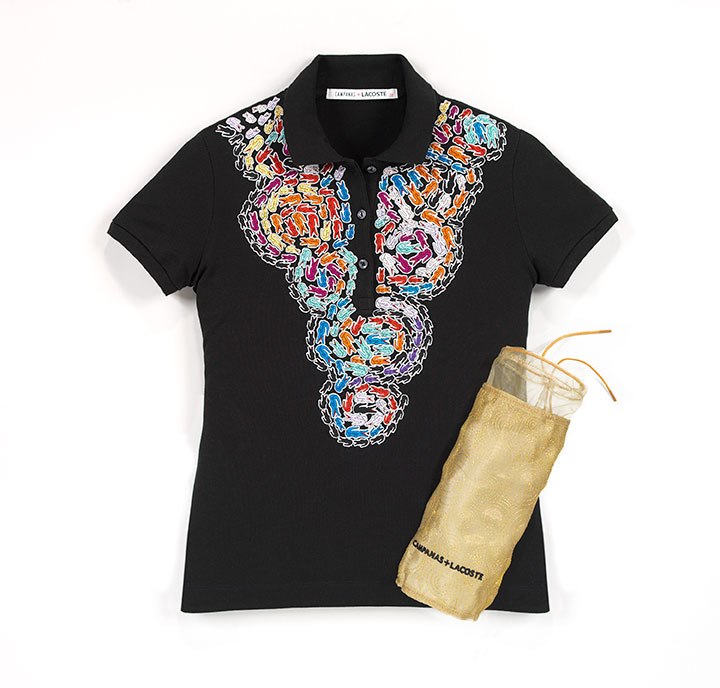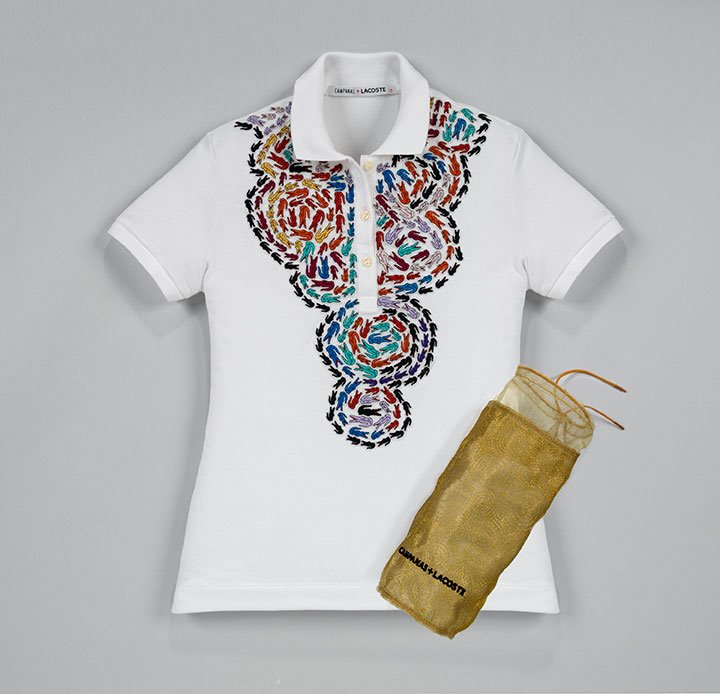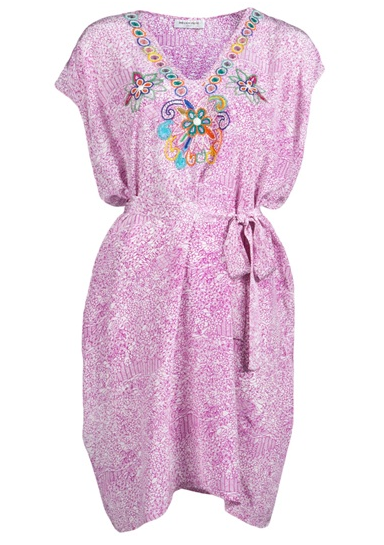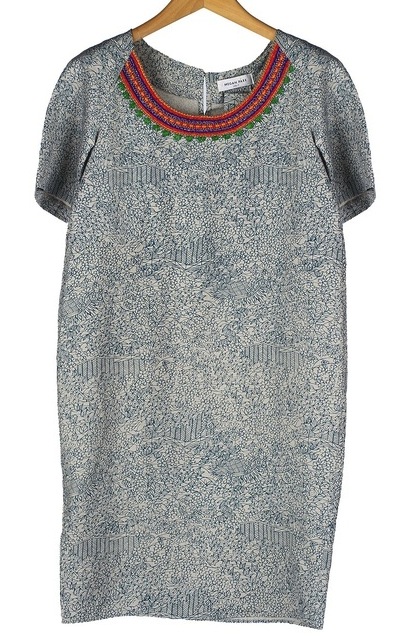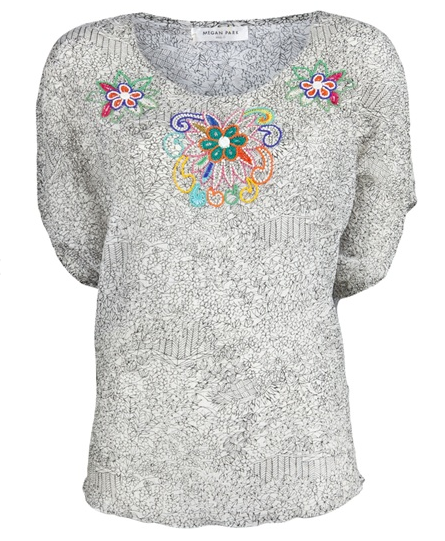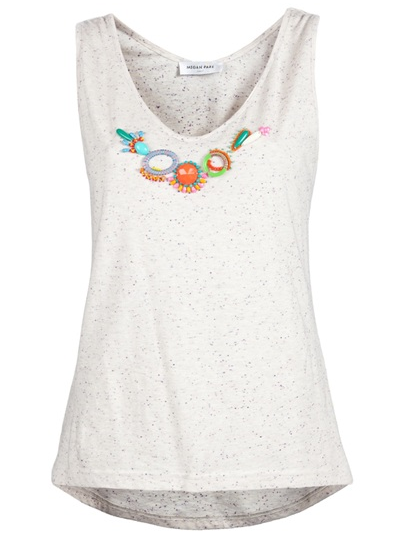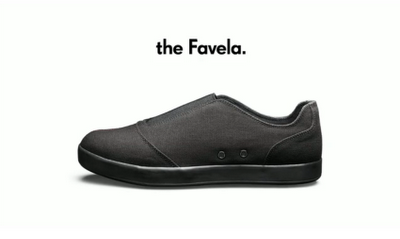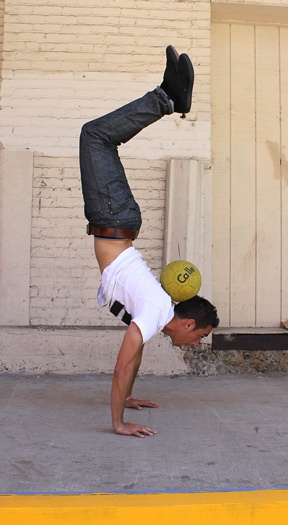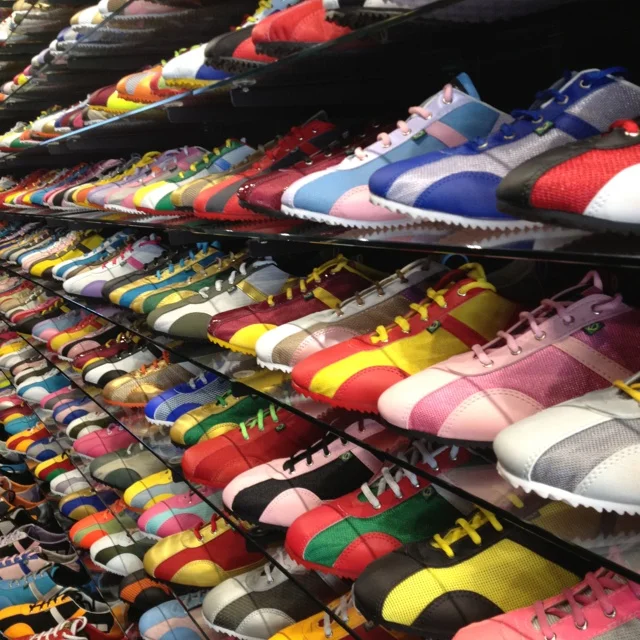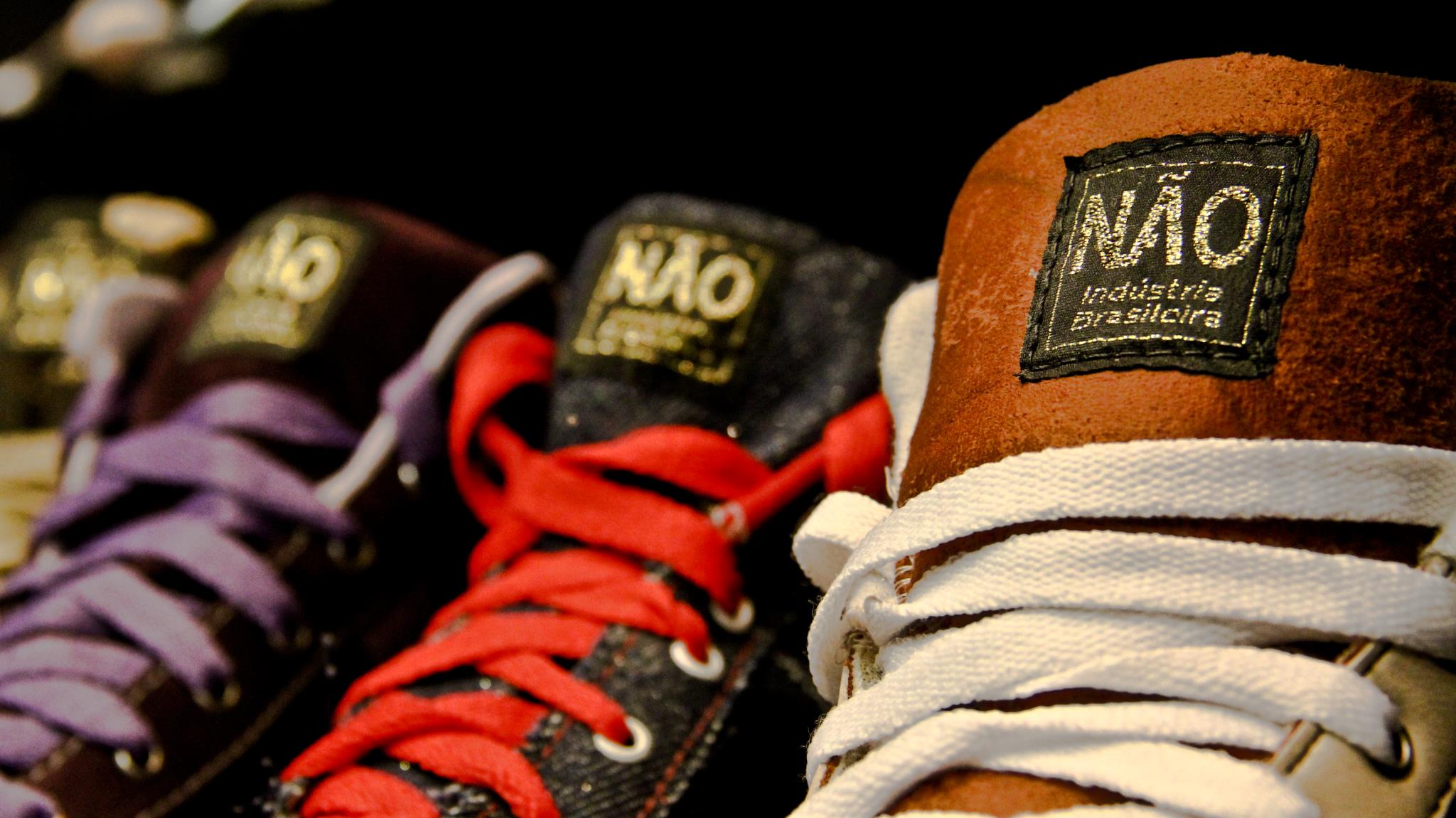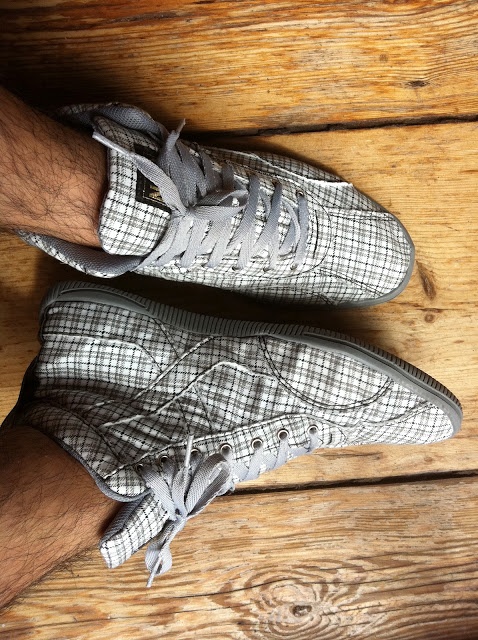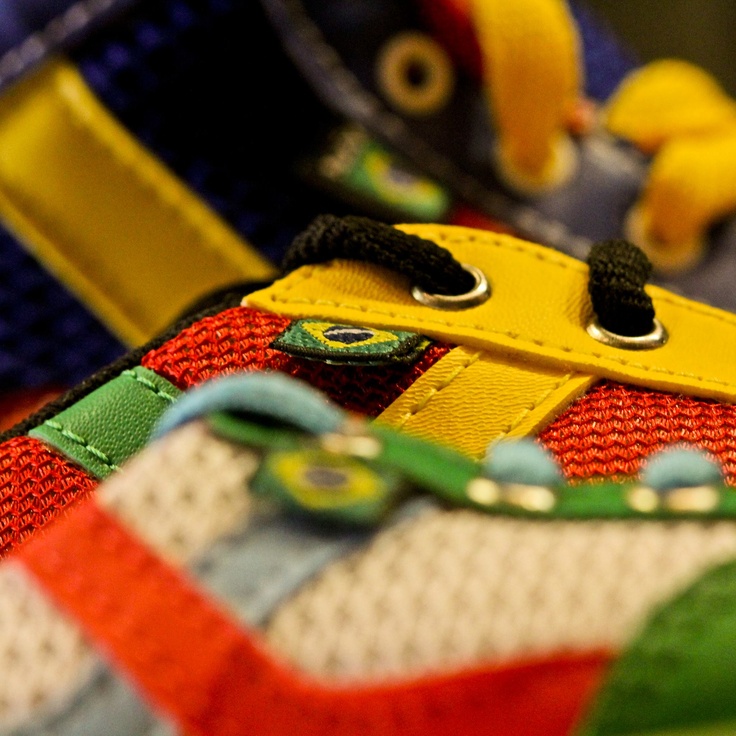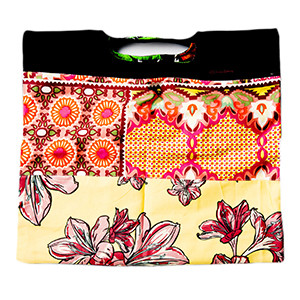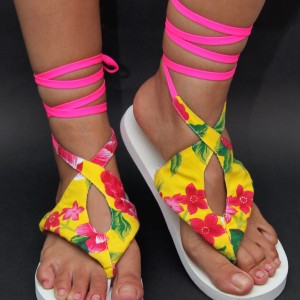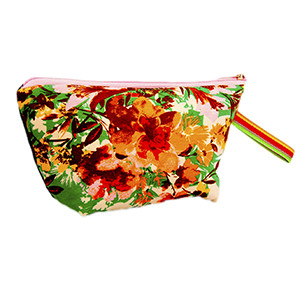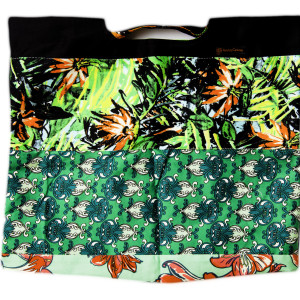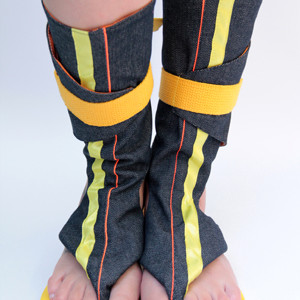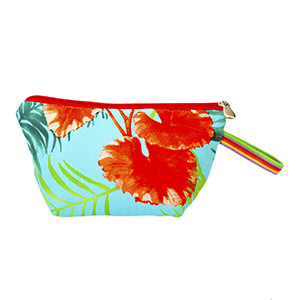II. Fashion
My discussion of fashion focuses on the 2009 Campanas + Lacoste project, a collaboration between Lacoste and the designers Humberto and Fernando Campana (the Campanas). This case study focuses on the references to the favela in the Campanas + Lacoste marketing materials. The Campanas are Brazil’s most famous contemporary designers and their work often references Brazilian themes. Brazilianness is an important aspect of the Campanas’ production and the marketing of their luxury products outside Brazil. In my discussion of the advertising and press coverage of the shirts designed by the Campanas for Lacoste, I explore how an international brand and the Campanas use references to favelas to brand a line of luxury products as Brazilian. This chapter discusses theories of commodification, fetishization, and the use/creation of a “primitive other” in the process of defining national identity.
Campanas + Lacoste 2009
Shirts. 2009.
Designers: Fernando and Humberto Fernando (Brazil) for Lacoste (France).
The 2009 Campanas + Lacoste collaboration resulted in the creation of six types of shirts sold at different price points. The first set of shirts, named “Special Edition,” were white short-sleeve polo shirts with a cluster of eight crocodiles in lieu of the label’s signature single logo. As noted by the New York Times blog, “[t]his understated and more wallet-friendly version,... can be had for $165.” Twenty thousand Special Edition polo shirts were created, although information about their origin is unavailable and they were not made by the Cooperativa de Trabalho Artensanal e de Costura da Rocinha Ltda. (Coopa-Roca), a women’s cooperative located in the Rio de Janeiro favela Rocinha. The huddle of alligators was supposed to show “how the reptiles pile up in mud beds during the dry season in their natural habitat.”
The second set of shirts designed by the Campanas for Lacoste were entitled “Limited Series." The mens' shirts had a cluster of anavilhanas, small fluvial islands found in the Amazon River and the women's version had clusters of lianas, vines that grow in trees in tropical rainforests. Coopa-Roca women hand-stitched 125 men’s Limited Series shirts and the same amount of the women’s using Lacoste logos of different sizes.
The “Super Limited Edition” shirts were the third set and both men's and women's versions were made entirely from approximately 3,000 hand-stitched alligators. The project’s website indicated that only 12 Super Limited Edition shirts would be made to order. Buyers could choose to have the shirt made out of green, gold, or silver Lacoste logos. Wallpaper magazine described this shirt as “Limited edition in the extreme,” and noted it would only be sold through “key retailers such as London’s Dover Street Market and Murray Moss in New York.” The New York Times noted, with a touch of humor, that the Super Limited Edition shirt “sells for - gulp - $7,000.”
The website for the Campanas + Lacoste project relied heavily on favelization in its description of the Limited and Super Limited shirts designed by the Campanas for Lacoste. Information about where the Special Edition shirts (the cheapest ones with only eight alligators) were made is not available on the project’s website. However, in regard to the other shirts, the website highlights:
"The limited and super limited editions are produced exclusively in cooperation with Coopa-Roca, a socially responsible sustainable development organization based in the Rocinha favela or Rio de Janeiro that provides work for the very creative craftswomen and seamstresses who live in that underprivileged neighborhood."
From top left to bottom right,
1. Shirt, "Men's Super Limited Edition", 2009. Fernando and Humberto Campana.
2. Shirt, "Women's Super Limited Edition", 2009. Fernando and Humberto Campana.
3. Shirt, "Men's Limited Edition", 2009. Fernando and Humberto Campana.
4. Shirt, "Women's Limited Edition", 2009. Fernando and Humberto Campana.
5. Shirt, "Men's Special Edition", 2009. Fernando and Humberto Campana.
6. Shirt, "Women's Special Edition", 2009. Fernando and Humberto Campana.
7. Photo of a Woman Working on "Women's Limited Edition"
8. Details of a Shirt, "Men's Super Limited Edition", 2009. Fernando and Humberto Campana.
Misrepresentation of Social Activism in the Documentary "The World of Carlos Miele" (2010)
During an interview with the founder of Coopa-Roca, Maria Teresa Romeiro Leal (also known as TT or Tetê), she cited an incident related to the designer Carlos Miele as an example she considers an egregious distortion of Coopa-Roca’s identity. Between 2001 and 2009, Coopa-Roca crocheted and embroidered clothing for M. Officer, Carlos Miele’s Brazilian brand, and between 2002 and 2008, they worked on projects for the Carlos Miele brand.64 During our meeting, Leal described finding out that in a documentary for Vogue TV filmed in 2010, Miele spoke as if Coopa-Roca continued to work for his companies. Leal wrote Vogue and reached out to the journalist Suzy Menkes from theInternational Herald Tribune to protest this misrepresentation. She succeeded in removing the documentary from the internet. In January 2012, the documentary The World of Carlos Miele was still listed on YouTube, but the link was inactive.65 I was able to secure a DVD copy of the video and it confirmed Leal’s assertion that Miele refers to Coopa-Roca in a manner that would lead viewers to Coopa-Roca was still making clothes for the designer in 2010. In the Vogue TV video, Miele states:
Ten years ago, I started a partnership with Coopa-Roca, which is a group of women living in a poor area of Rio de Janeiro. They do handmade craftsmanship with different traditional techniques from Brazil….With this partnership, we can keep the women at home, taking care of the kids and making a living. Fashion is a way of empowering women: women who wear my clothes and women that make my clothes. So fashion for me is a way of building a bridge between those two groups of women.
Miele describes his relationship with Coopa-Roca as a “partnership” even though the cooperative provided services as sub-contractors. In her book Design + Craft: The Brazilian Path, Adélia Borges cautions against situations where those engaging in “social design” misconstrue their relationships with craftspeople. Miele’s statement is an example of what Borges critiqued: a strictly commercial relationship is recast as a partnership so that the designer can describe the project in an altruistic (rather than contractual) manner.
Excerpts from Carlos Miele Spring/Summer 2008 Catalog
""It's important for me to return to society what society gave to me," he declares, so he works with women's co-operatives in deprived areas. The best-known is Coopa-Roca in Rio, which operates out of Rocinha, Latina America's biggest favela. The women of Coopa-Roca use traditional Brazilian craft techniques such as patchwork, knotwork and crochet to decorate Miele's dresses and the denims he makes for his M.Officer, his Brazil-only diffusion line.
One of the most striking effects is achieved with fuxico, where fabric is bunched and embroidered to make a flower. When Miele strews these around the hem of a dramatic bias-cut gown, it's a perfect illustration of what he calls "a new dialogue between two worlds that would never meet, but can and must co-habit."
"Working with communities in need, I found the traditional handicraft techniques of our country hidden inside these places, as curtains, sofas and rugs," says the designer. "I though it would be interesting to bring theses lost or forgotten skills to the catwalk." In so doing, he is clearly keeping alive a part of Brazil's past. But Mile looks to the future too, when he tasks Coopa-Roca cooperatives with using recycled materials like plastics and soft drink bottles to crate new kinds of handicrafts. His conviction that success carries its own set of responsibilities, especially in a country like Brazil where the government's shortfalls in critical social services like health and education compel private initiatives to pick up the slack, means he also underwrote the reconstruction of a children's emergency room in his old neighborhood in São Paulo. It sees more than 10,000 patients a month.
Fashion and social activism are a particularly 21st century mix, so it fits that Carlos Miele should be, in his own way, a leader. Brazil is, after all, a 21st century country. But Mile's appeal is ultimately timeless. His clothes celebrate beauty, joy, love of life. and that too is Brazil."
- Roberts, Michael. Carlos Miele (Spring Summer 2008) . São Paulo: Carlos Miele Studio, 2008.
Carlos Miele's Dresses (Spring/Summer 2008) in Collaboration with Coopa-Roca
From left to right,
1. Dress, "Spring/Summer 2008 Ready-To-Wear Fashion Show #1", 2008. Carlos Miele.
2. Dress, "Spring/Summer 2008 Ready-To-Wear Fashion Show #31", 2008. Carlos Miele.
3. Dress, "Spring/Summer 2008 Ready-To-Wear Fashion Show #17", 2008. Carlos Miele.
4. Dress, "Spring/Summer 2008 Ready-To-Wear Fashion Show #11", 2008. Carlos Miele.
[place holder for any other text needed]
Givenchy Spring 2014 Men's Pre-Collection by Riccardo Tischi
Apparel. 2013.
Designer: Riccardo Tischi (Italy).
From left to right,
1. T-Shirt, "Black Jersey Favelas 74 Print T-Shirt", 2013. Riccardo Tischi.
2. Top, "[ ]", 2013. Riccardo Tischi. (worn by Marina Abramovic at the CFDA Awards in NYC on June 3, 2013)
3. T-Shirt, "Black Jersey Favelas 74 Print T-Shirt", 2013. Riccardo Tischi. (worn by Marina Abramovic, posed together with Riccardo Tischi at Tate Americas Foundation Artists Dinner in NYC on May 8, 2013)
"The Spring Pre-Colleciton strengthens Givenchy's signature male wardrobe. It is infused with a Latin influence for Latin men are not afraid of mixing prints seemingly at odds or layering contrasting pieces making such looks cool and stylish. the silhouette exhales relaxed sportswear and sensual tailoring creating a newfound elegance. "Favela 74" sums up Riccardo Tisci's obsession of the Latin world. It is another expression of streetwear urban culture. This season he revisits natural elegance and gender blending. Vivid combinations of prints from flowers and camouflage prints to roses and checks offer a new take on the feminine and the masculine. They create joyful patchworks where bright, dark and faded versions interact with each other. Placed prints and intricate cuts reveal graphic compositions."
- Givenchy Spring 2014 Men's Pre-Collection Lookbook
"The collection, Tisci says, takes inspiration from Latin culture, and has the potentially sensitive name of Favelas 74. (1974 is Tisci’s birth year.) “Men in favelas are more natural and more confident about their sexuality,” he explains. “They are not scared to mix and match clothing. They represent sensuality, street, and elegance—what I recognize as elegance. I love the fact that they play with opposite things like flowers (which represent peace and serenity) and camouflage (which represents the army), but all interpreted in a very colorful and positive way.”
Happy Favela Collection by Pardon
Apparel. 2013.
Designer: Pardon (France).
From left to right,
1. Shirt, "Polo Anthony", 2013. Pardon.
2. Shirt, "T-Shirt Angie", 2013. Pardon.
3. Shoes, "Savate Adriana", 2013. Pardon.
[quote from Pardon's website about the collection]
Campanas + Lacoste 2012
Shirts. 2012.
Designers: Fernando and Humberto Campana (Brazil) for Lacoste (France)
From top left to bottom right,
1. Shirt, "Men's Limited Edition - Blue", 2012. Fernando and Humberto Campana.
2. Shirt, "Men's Limited Edition - White", 2012. Fernando and Humberto Campana.
3. Shirt, "Women's Limited Edition - White", 2012. Fernando and Humberto Campana.
4. Shirt, "Women's Limited Edition - Black", 2012. Fernando and Humberto Campana.
5. Shirt, "Men's Special Edition - Black", 2012. Fernando and Humberto Campana.
6. Shirt, "Men's Special Edition - Blue", 2012. Fernando and Humberto Campana.
7. Shirt, "Men's Special Edition - Pink", 2012. Fernando and Humberto Campana.
8. Shirt, "Men's Special Edition - White", 2012. Fernando and Humberto Campana.
9. Shirt, "Women's Special Edition - Blue", 2012. Fernando and Humberto Campana.
10. Shirt, "Women's Special Edition - Orange", 2012. Fernando and Humberto Campana.
11. Shirt, "Women's Special Edition - White", 2012. Fernando and Humberto Campana.
12. Shirt, "Women's Special Edition - Black", 2012. Fernando and Humberto Campana.
Sixteen pieces of each limited edition were created, hand-sewn by artisans from the COOPA-ROCA women’s cooperative in Rio de Janeiro. [However, there was no contract for this manufacture, nor did the Lacoste's marketing material mentioned its work with Coopa-Roca.]
Megan Park Summer Collection 2012
Apparel. 2012.
Designer: Megan Park (Australia)
From left to right,
1. Dress, "Favela Dress", 2012. Megan Park.
2. Top, "Favela Day Top", 2012. Megan Park.
3. Dress, "Favela Floral Dress", 2012. Megan Park.
4. Top, "Favela Frida Top", 2012. Megan Park.
5. Bracelet, "Favela Fluro Drop Resin Bangle", 2012. Megan Park.
6. Top, "Favela Tank", 2012. Megan Park.
The Favela, Slip-on Street Soccer Shoes
Shoes. [????]
Designer: Calle (USA)
1-2. Shoes, "the Favela", 20[??]. Calle.
Favela Travel Bag
Bag. 20[XX].
Designer: Soffer Ari (USA).
Bag, "Favela Travel Bag", 20[??]. Soffer Ari.
Não do Brasil
Shoes.
Designer: Não do Brasil (Brazil)
From left to right,
1. Video of Não do Brasil stores across the world
2-4. Shoes. "[???]", 20[??]. Não do Brasil.
"The Legend says that, somewhere in the depths of the Minas Geraïs (arid region of Brazil) tired of walking barefoot and of hearing his poor mother answer NÃO at each of his requests to buy him a simple pair of shoes, little Adilson got into the habit of making his own footwear with colourful materials he found in the slums of Belo Horizonte. Over the years, his shoes became more and more beautiful. Today, a rumor goes around that Adilson is a happy man, as head of a small firm that produces thousands of multicoloured shoes every year for the enjoyment of all. When asked whether he had given a name to his shoes, Adilson would recall his mother's words and invariably answer NÃO, with an enigmatic smile on his face... Thus was born the name NÃO, or at least that's what the Legend says... "
Retalhos Cariocas (exclusively distributed in the US by Marlandia)
Fashion accessories.
Designers: Retalhos Cariocas (Brazil)
From left to right,
1. Tote Bag, "Primavera", 20[??]. Retalhos Cariocas.
2. Women's Sandals, "Cruzada Floral Rosa", 20[??]. Retalhos Cariocas.
3. Zipper Bag, "Tapa Cor", 20[??]. Retalhos Cariocas.
4. Tote Bag, "Palinho", 20[??]. Retalhos Cariocas.
5. Women's Sandals, "Cano Longo Amarelo", 20[??]. Retalhos Cariocas.
6. Zipper Bag, "Lily", 20[??]. Retalhos Cariocas.
"The choices are few for those that live in Brazil’s favela slums — drugs, prostitution or despair. Having a job is difficult, owning a business is unheard of, and working for violent drug trafficking gangs is often the only avenue for a young entrepreneur. But now, there is a beacon of hope on the horizon.
Silvinha Oliveira, born in one of Rio de Janeiro’s most violent favela slums, Barreira do Vasco, worked her own way through fashion school and founded a seamstress class to empower women in her favela with opportunities for independent income. Silvinha’s designs were so popular that she started selling them at markets, and Retalhos Cariocas, known as Rio Scraps, was born.
Based in Barreira do Vasco, Retalhos Cariocas is a fashion house that has pioneered sustainable sourcing techniques to create beautiful one-of-a-kind pieces of apparel, footwear and accessories from discarded fabrics the global fashion industry otherwise dumps in landfills. Partners include some of the largest Brazilian brands such as Osklen, Kalimo, and Afghan.
In addition to the free sewing courses, Retalhos Cariocas seeks to employ as many graduates of its classes as possible, always at a fair trade wage. By creating an environment of respect, honor, creativity and dedication, Retalhos Cariocas gives people tools to improve their lives and simultaneously reduces waste from landfills.
“I started the courses because I wanted to share my knowledge and put in people’s minds that even though they live in a favela and are poor, they can succeed. I think this is the real spirit of Retalhos Cariocas,” commented Silvinha. She continues, “People from the favela… There’s a destiny of being poor, not being able to go to university, or get a good job. We’re fighting to destroy the mentality that a person from the favela doesn’t have the right to be someone.”
Retalhos Cariocas is a beacon of hope for Brazil’s slum communities. They are transforming fashion and proving it is possible for opportunity to bloom in a slum where education and skills are hard to come by.
Marlandia, exclusive U.S. distributor, shares Retalhos Cariocas’ belief in human potential. When we share the tools to harness this potential, we are all investing in a brighter and more just future. Every Retalhos Cariocas piece is unique, made at a fair trade wage, and bears the stories of its fabric and the hands crafting it.
Marlandia’s collaboration with Retalhos Cariocas is a socially responsible enterprise that seeks to leverage U.S. retail market power and provide opportunities for responsible consumerism. Our success is manifested in supporting sustainable economic development in Brazil’s slums, which in turn impacts higher quality education, justice, and overall quality of life. The goal of Marlandia and Retalhos Cariocas is three-fold: to provide employment for these promising women through a sustainable monthly income, while also contributing to the overall economic development of Brazil’s slum communities, and upcycling materials that would otherwise increase Brazil’s notorious landfills."
